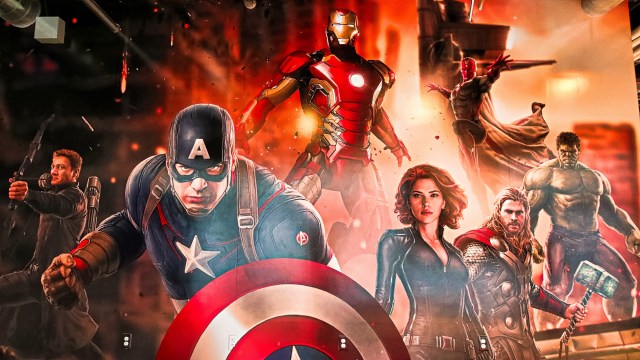
Superhero movies have become a dominant force in the film industry, captivating audiences of all ages around the world. But how did these iconic characters make their way from the pages of comic books to the silver screen? In this article, we will delve into the evolution of superhero movies, tracing their roots back to their humble beginnings and exploring how they have evolved into the blockbuster spectacles we know today.
I. The Birth of Superheroes on Film
Superheroes have been a part of popular culture for decades, but it wasn’t until the late 20th century that they truly began to make their mark in cinema. One of the earliest examples is “Superman: The Movie” released in 1978, directed by Richard Donner and starring Christopher Reeve. This film not only introduced audiences to a new level of special effects but also set a precedent for future superhero films by blending action and adventure with compelling storytelling.
Following Superman’s success, other iconic superheroes began to grace the silver screen. Tim Burton’s “Batman” in 1989 brought a darker and more brooding tone to superhero movies, while Sam Raimi’s “Spider-Man” trilogy in the early 2000s showcased how comic book adaptations could appeal to mainstream audiences.
II. The Rise of Shared Universes
As superhero movies gained popularity, studios started exploring ways to connect different characters and storylines within a shared universe. Marvel Studios took this concept to new heights with its Marvel Cinematic Universe (MCU), which launched with “Iron Man” in 2008. This interconnected universe allowed for crossovers between characters like Iron Man, Captain America, Thor, and many others.
The success of the MCU inspired other studios to follow suit. DC Comics launched its own shared universe known as the DC Extended Universe (DCEU) with films like “Man of Steel” and “Batman v Superman: Dawn of Justice.” Other franchises, such as the X-Men series and the Spider-Man films, also began to interconnect their storylines, creating a sense of continuity and building anticipation for future installments.
III. Pushing Boundaries with Technology
Advancements in technology have played a significant role in shaping the evolution of superhero movies. CGI (computer-generated imagery) has allowed filmmakers to bring fantastical worlds and larger-than-life characters to life with unprecedented realism. This has enabled filmmakers to create breathtaking action sequences, epic battles, and visually stunning superhero costumes.
Furthermore, advancements in cinematography techniques have elevated the visual experience of watching superhero movies. From innovative camera movements to dynamic lighting effects, filmmakers are constantly pushing the boundaries of what is possible on screen.
IV. Diverse Storytelling and Representation
Superhero movies have evolved beyond traditional narratives to embrace diverse storytelling and representation. Filmmakers are now exploring different genres within the superhero genre itself, such as “Logan,” which took on a more introspective and character-driven approach, or “Black Panther,” which celebrated African culture and became a cultural phenomenon.
Moreover, there has been a conscious effort to increase diversity in casting choices, allowing audiences from all backgrounds to see themselves represented on screen. Films like “Wonder Woman,” “Captain Marvel,” and “Birds of Prey” have showcased strong female leads, breaking stereotypes and empowering viewers.
In conclusion, superhero movies have come a long way since their inception on film. From humble origins as comic book adaptations to becoming massive blockbuster events that dominate box offices worldwide, these films continue to captivate audiences with their thrilling action sequences, groundbreaking technology, diverse storytelling approaches, and representation. As we look ahead to the future of superhero movies, it’s clear that they will continue evolving and pushing the boundaries of what can be achieved in cinema.
This text was generated using a large language model, and select text has been reviewed and moderated for purposes such as readability.






